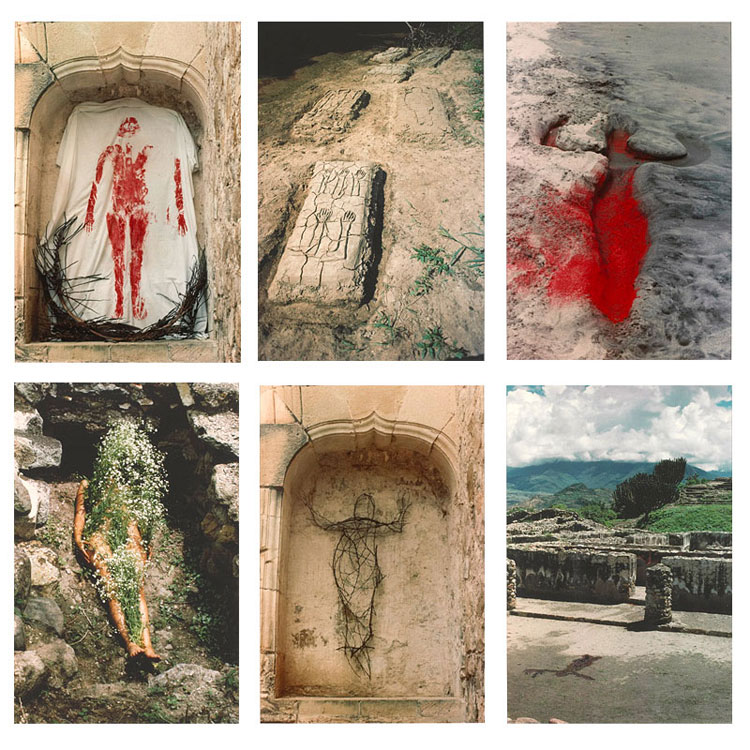Ana Mendieta (Born 1948 in Havana; died 1985 in New York) came to prominence in the 1970s for her fusion of performance, feminist, and land art. She used her own body in interaction with the landscape to make connections between nature and the femme body. Mendieta documented many of her performances in photographs and films. Despite an abbreviated career (she died in 1985 at the age of 36), she continues to be an influential artist within histories and contemporary practices of land art, feminist art, and performance.
Mendieta came to the United States from Cuba as a teenager in 1961, in forced exile. This difficult cultural and familial separation left an indelible mark on her work, which often explored themes of transience and mortality. Mendieta began the Silueta series in 1973 while on a trip to pre-Columbian sites in Oaxaca, Mexico, with fellow intermedia MFA students at the University of Iowa.
She visited pre-Columbian sites and became interested in Indigenous Central American and Caribbean culture and rituals, incorporating ancient goddess archetypes and notions of feminine life force in her work. For her first Silueta work, Mendieta lay nude in a Zapotec tomb with white flowers strewn over her body. She went on to create many more Siluetas in Mexico and Iowa, covering her body with a wide range of substances, including rocks, blood, sticks, and cloth. She also carved her figure directly into the earth, with arms overhead to represent the merger of earth and sky, or sometimes imprinting the silhouette of her body on the landscape.
Captivated by the natural landscape, Mendieta’s ephemeral sculptures interact directly with the landscape. The photographic and filmic documents of these ephemeral works suggest the fragility of the human being in relation to the forces of nature. While photographs from the Silueta series are often presented individually, seen together, they suggest Mendieta’s sustained interest in various female archetypes and the cycles of nature and life.


